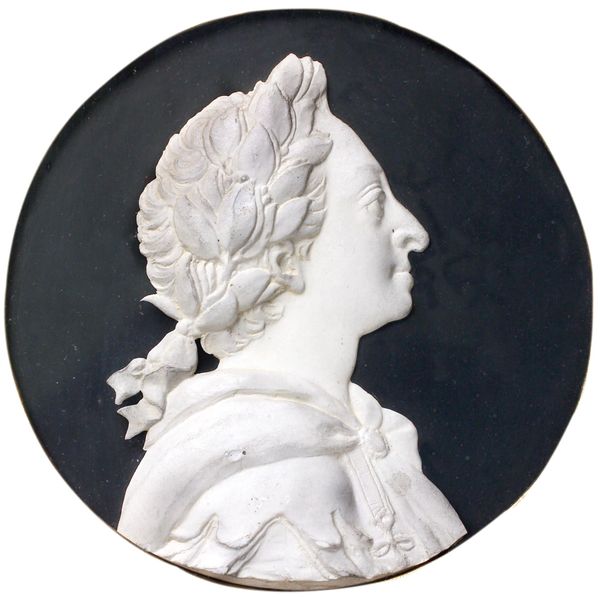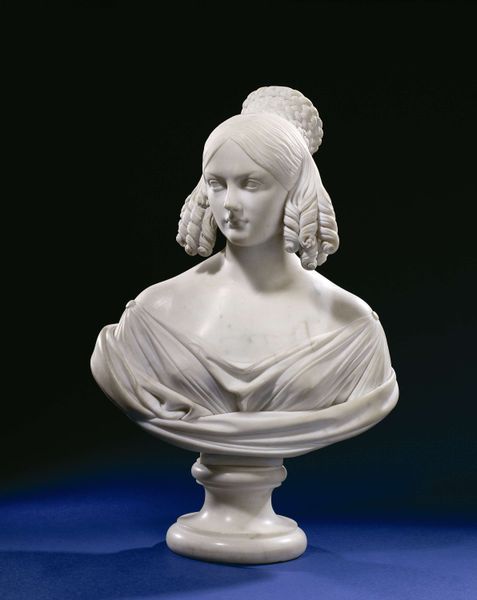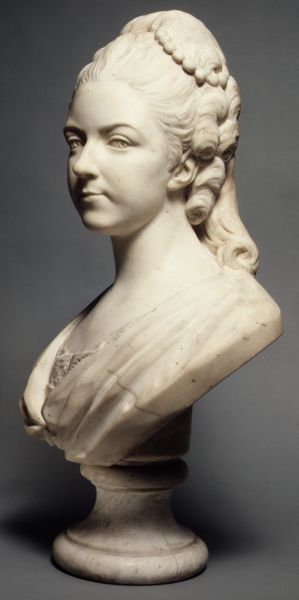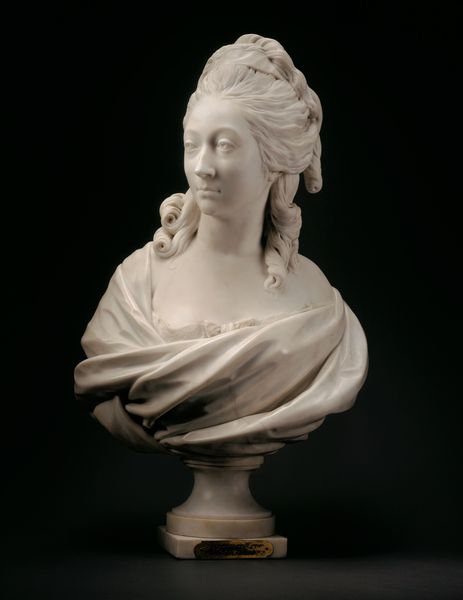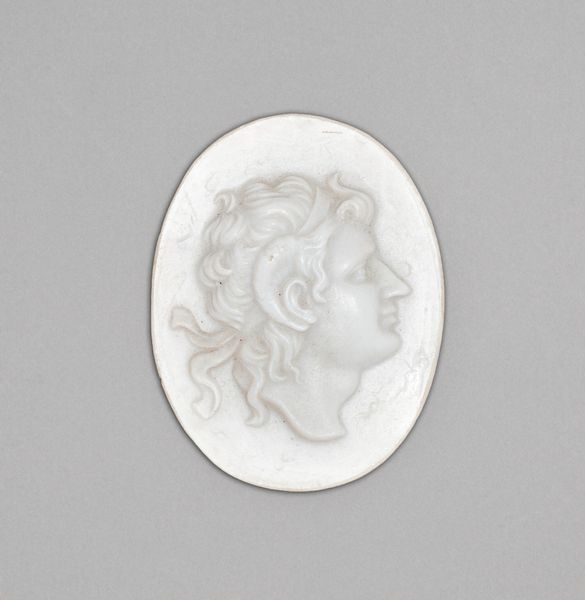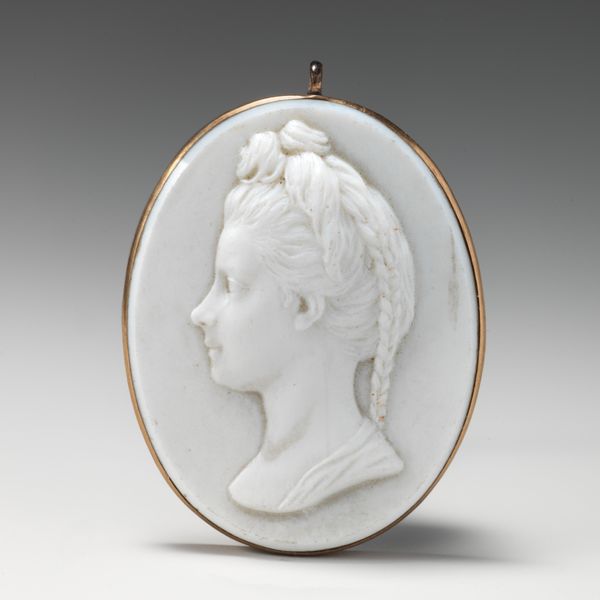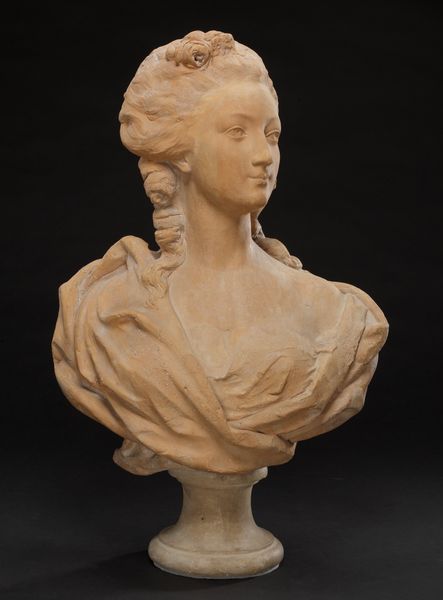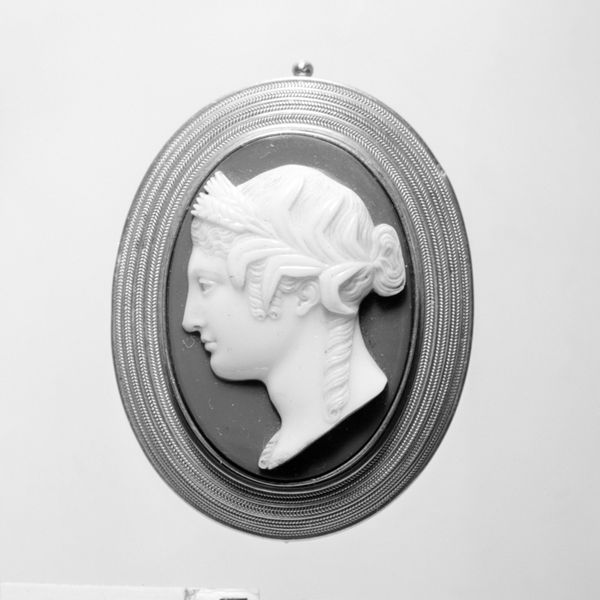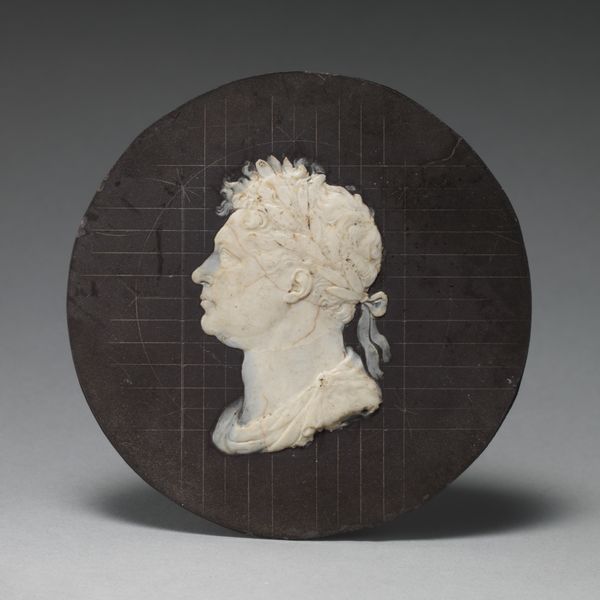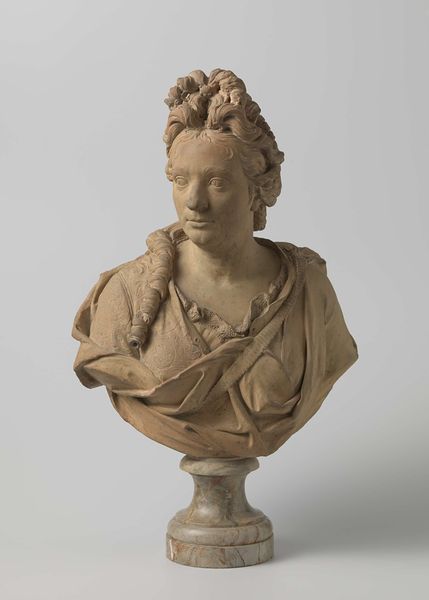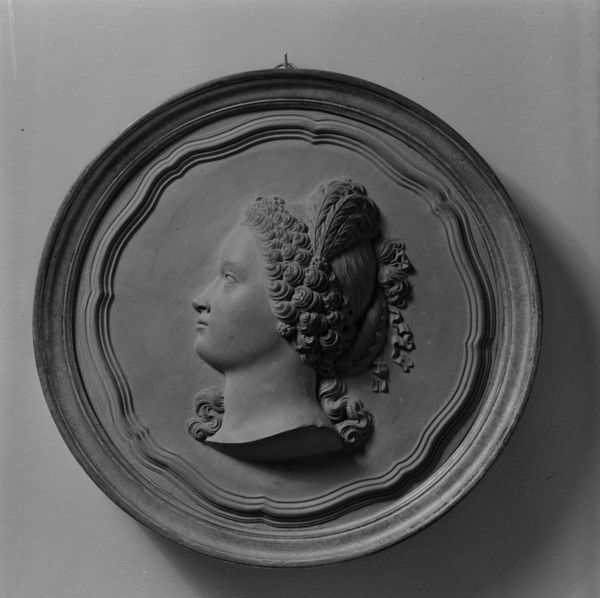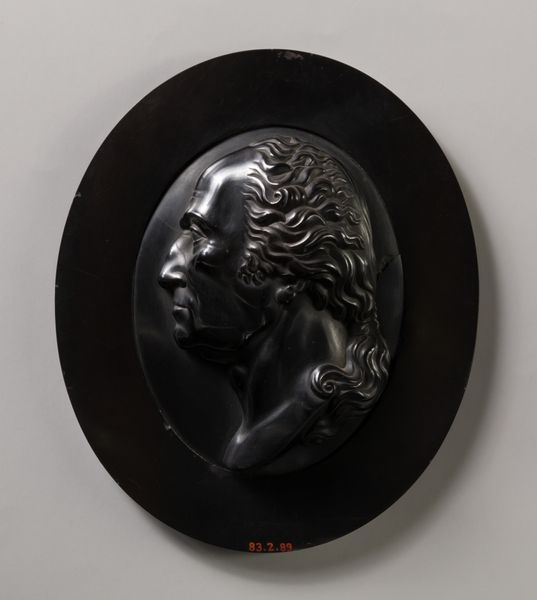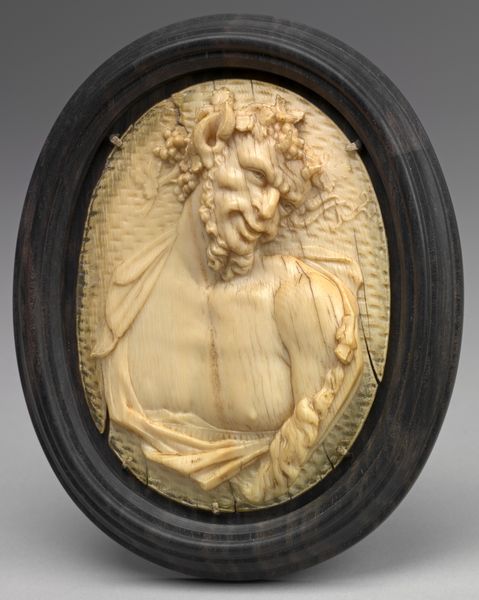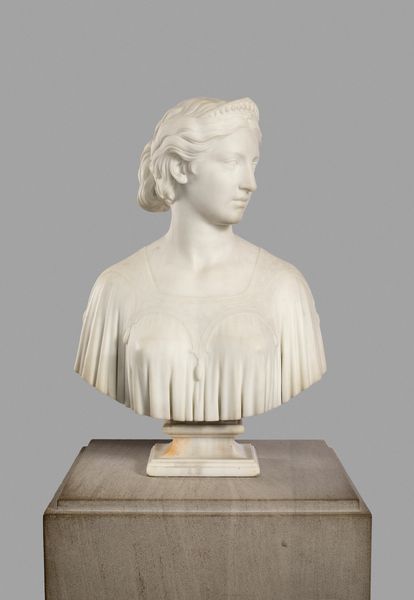
alabaster, relief, sculpture
#
portrait
#
neoclacissism
#
sculpture
#
alabaster
#
relief
#
sculpture
Dimensions: 65 cm (height) x 65 cm (width) x 8 cm (depth) (Brutto), 49 cm (None) (None)
Curator: Immediately striking. It projects such an aura of cool, collected…almost otherworldly beauty. Editor: This is a relief sculpture by C.F. Stanley, created in 1780. The piece, rendered in alabaster, is titled "Fru Marie Horn, f. Martin". Curator: Alabaster, a perfect material choice. Notice how the smoothness accentuates the lines, the form—especially the meticulous arrangement of her hair. It’s fascinating how he manipulates light with the shallow depth of the relief. The way her coiffure rises creates visual interest above her placid, forward gaze, the braided tail balanced by the top-heavy headscarf. Editor: A society portrait in a moment of Neoclassical fervor. These sculpted reliefs were popular with the Danish elite, often displayed in their homes as statements of cultural refinement and status, of course. To own art was in and of itself a form of cultural capital. Curator: Capital, yes, but beyond that, look at how Stanley distilled this woman to an essence, her expression so serene and almost vacant of strong emotion. Every curve, every line, feels intentional, guided toward a presentation of idealized, intellectual beauty. See the smooth lines in her nose? That’s her character. It’s more than capturing a likeness; it is conveying virtue. Editor: Exactly. And in its context, beyond just the “virtue” of the sitter, is the social function of the portrait itself. The display in the home was about projecting an image: aligning oneself with classical ideals while celebrating national pride through Danish artists. The choice of a pale alabaster suggests purity and light, almost angelical connotations and speaks volumes about the cultural aesthetics valued during the Age of Enlightenment. Curator: Perhaps, then, the ‘coolness’ is simply an extension of that ambition. A quest to present themselves as beings who were reasoned, grounded in the intellect. An idealized representation but also a representation that conveys very powerful values, cultural codes. Editor: Yes. A dialogue between form and function, aesthetics and ideology, right there in the smooth curve of a profile. This work and similar works offered the bourgeoisie opportunities to express values and identities that, to this day, continue to inform us about that era.
Comments
No comments
Be the first to comment and join the conversation on the ultimate creative platform.
